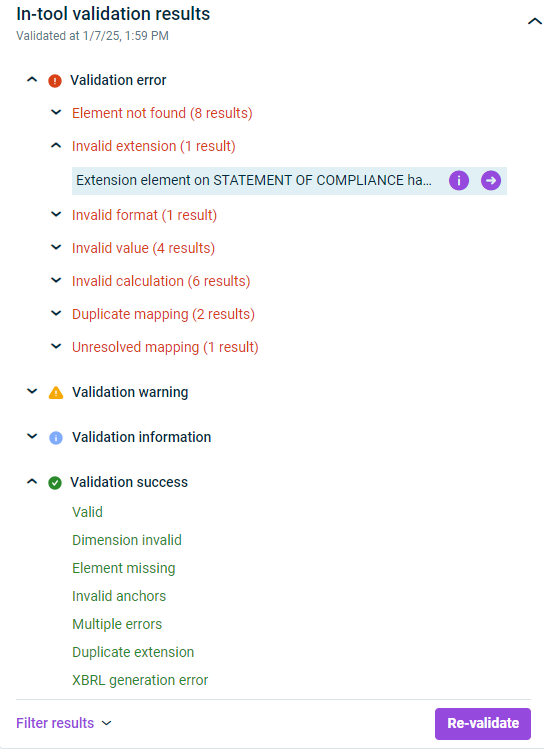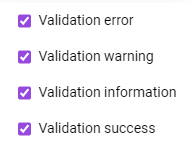Validations
Last updated on 2025-01-07
Overview
A document can be checked for errors, validity and completeness by means of validations. The XBRL Tagger has two types of validation:
- Validations executed while editing the document, referred to as in-tool validations. The currently tagged areas are checked for inconsistencies and errors.
- Validations that are automatically carried out when creating an iXBRL document.
This article contains the following sections:
Validation Result Types
The validation results are divided into the following types:
Type
Description
Validation error
Shows errors detected during the validation process. The listed errors must be rectified.
Validation warning
Shows warnings that may have to be edited. The listed warnings should be checked.
Validation information
Shows general information, for example on non-tagged values in a table.
Validation success
Shows the validation areas in which no errors were found.
Options for Validation Results
The following options are available for validation results:
Option
Description
![]()
Click the icon to show details on the message.
![]()
Click the icon to display the tag and its properties.
Re-validate
Carries out all validation processes again.
Validations When Creating an iXBRL Report
When creating an iXBRL report, a complete XBRL validation is conducted, covering the following specifications:
- XBRL Specification 2.1
- XBRL Dimensions 1.0
- XBRL Formula 1.0
- Table Linkbase 1.0
- Extensible Enumerations 1.0 and 2.0
- Inline XBRL 1.1 incl. XHTML and Transformation Registries 1-4
- Unit Registry
- Additionally, a so-called filing rule validation is performed. For example, an ESEF report is checked against the ESEF Reporting Manual and the rules it contains.
An iXBRL report is created in the XBRL document workspace by clicking Generate iXBRL report package.

